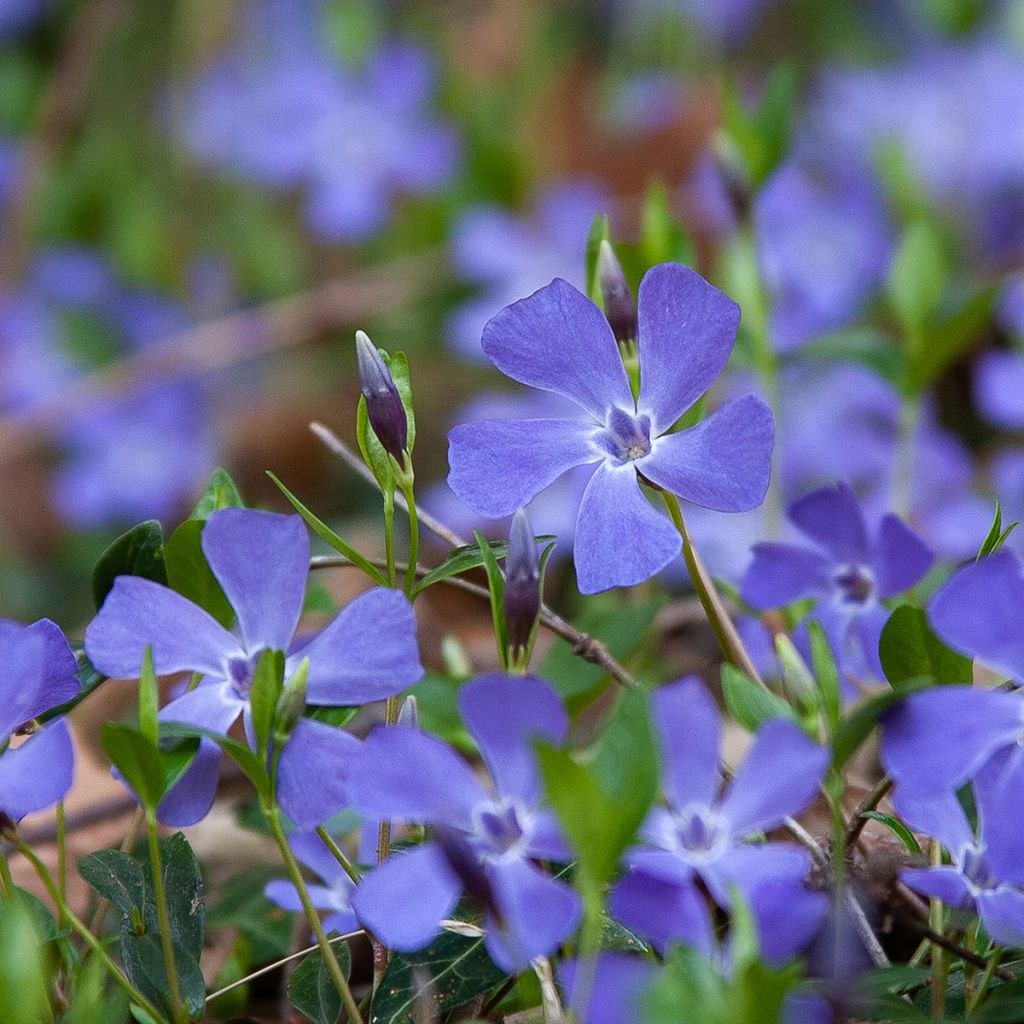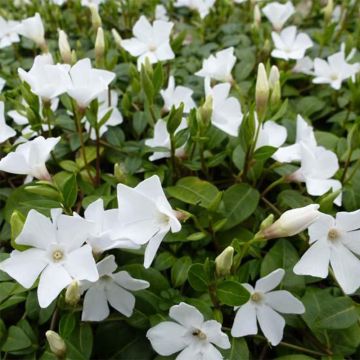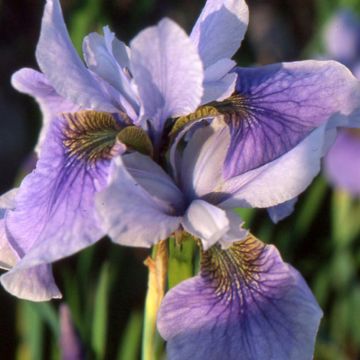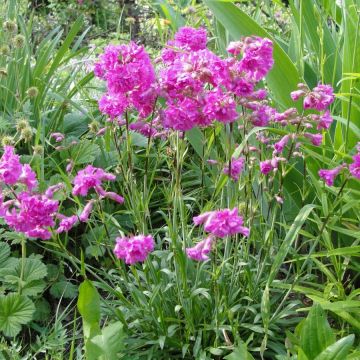

Vinca minor


Vinca minor


Vinca minor


Vinca minor


Vinca minor


Vinca minor


Vinca minor


Vinca minor


Vinca minor
Vinca minor
Vinca minor
Lesser Periwinkle, Dwarf Periwinkle, Small Periwinkle, Common Periwinkle
very good
syan, 28/08/2025
Special offer!
Receive a €20 voucher for any order over €90 (excluding delivery costs, credit notes, and plastic-free options)!
1- Add your favorite plants to your cart.
2- Once you have reached €90, confirm your order (you can even choose the delivery date!).
3- As soon as your order is shipped, you will receive an email containing your voucher code, valid for 3 months (90 days).
Your voucher is unique and can only be used once, for any order with a minimum value of €20, excluding delivery costs.
Can be combined with other current offers, non-divisible and non-refundable.
Home or relay delivery (depending on size and destination)
Schedule delivery date,
and select date in basket
This plant carries a 12 months recovery warranty
More information
We guarantee the quality of our plants for a full growing cycle, and will replace at our expense any plant that fails to recover under normal climatic and planting conditions.

Would this plant suit my garden?
Set up your Plantfit profile →
Description
The Vinca minor, the lesser periwinkle, is much better suited for the ornamentation of our gardens than its cousin the greater periwinkle, which is invasive and grows somewhat anarchically in wild woodlands. The lesser periwinkle has a more compact growth, easy to control, a much neater appearance, but also a more generous spring flowering, with small stars of this absolutely delightful periwinkle blue. This creeping perennial plant is perfect for quickly covering difficult areas of soil, including the roots of trees and under conifers. It forms a dense and elegant carpet composed of evergreen leaves that are bright and shiny green, attractive all year round, even in the shade in dry soil during the summer.
The lesser periwinkle is a creeping perennial plant with woody stems from the Apocynaceae family, native to central and southern Europe. Common in France, it populates woodlands, the base of hedges, rocks, or even dry and sunny meadows. This plant develops from a woody climbing stem base, producing creeping or erect stems, forming a dense carpet 20 cm (8in) high and 1 m (3ft) or more in width. In contact with the ground, the stems produce vigorous roots that allow the plant to continue its lateral growth. The stems bear opposite, ovate, dark green, shiny leaves, and produce coiled buds throughout spring and sometimes again from September, which open into solitary terminal flowers, blue, tubular at the base, opening into 5 lobes of square, asymmetrical shape.
Periwinkles are useful ground covers that can sometimes become invasive in small gardens. They will even spread in shady areas, although they may be slightly less floriferous. They eventually form dense intermingled mats, effectively covering the ground under trees or bushes of whose roots they are not afraid, but also in rockeries or along pathways. In shade or partial shade, the lesser periwinkle can be planted with Acanthus mollis, Dichondra repens, Epimedium, dead nettles, or Wall pennywort (Cymbalaria muralis), in a slightly wild woodland, even under a hedge of cypress or thuja. The 'Gloire de Marengo' ivy, with its fabulous cream-variegated gray-green leaves, will form a beautiful combination with Vinca minor in regions where winter is not too harsh. In the sun, it can accompany, for example, snow-in-summer (Cerastium tomentosum), thymes, Waldsteinia ternata, and many other ground covers. The lesser periwinkle can also be used in shaded hanging baskets and containers, to accompany annual plants.
Report an error about the product description
Vinca minor in pictures




Flowering
Foliage
Plant habit
Botanical data
Vinca
minor
Apocynaceae
Lesser Periwinkle, Dwarf Periwinkle, Small Periwinkle, Common Periwinkle
Western Europe
Other Vinca - Periwinkle
View all →Planting and care
Periwinkles accept any type of soil in winter and spring and are more beautiful in soil that doesn't dry out, even though they tolerate summer drought perfectly and can do without watering once established. They thrive in all exposures, with a preference for partial shade. In full sun, i with adequaate moisture, the flowering is nevertheless slightly better. They tolerate limestone and poor soils perfectly. If they become too invasive, prune the stems at the end of winter to limit their growth.
Planting period
Intended location
Care
-
, onOrder confirmed
Reply from on Promesse de fleurs
Similar products
Haven't found what you were looking for?
Hardiness is the lowest winter temperature a plant can endure without suffering serious damage or even dying. However, hardiness is affected by location (a sheltered area, such as a patio), protection (winter cover) and soil type (hardiness is improved by well-drained soil).

Photo Sharing Terms & Conditions
In order to encourage gardeners to interact and share their experiences, Promesse de fleurs offers various media enabling content to be uploaded onto its Site - in particular via the ‘Photo sharing’ module.
The User agrees to refrain from:
- Posting any content that is illegal, prejudicial, insulting, racist, inciteful to hatred, revisionist, contrary to public decency, that infringes on privacy or on the privacy rights of third parties, in particular the publicity rights of persons and goods, intellectual property rights, or the right to privacy.
- Submitting content on behalf of a third party;
- Impersonate the identity of a third party and/or publish any personal information about a third party;
In general, the User undertakes to refrain from any unethical behaviour.
All Content (in particular text, comments, files, images, photos, videos, creative works, etc.), which may be subject to property or intellectual property rights, image or other private rights, shall remain the property of the User, subject to the limited rights granted by the terms of the licence granted by Promesse de fleurs as stated below. Users are at liberty to publish or not to publish such Content on the Site, notably via the ‘Photo Sharing’ facility, and accept that this Content shall be made public and freely accessible, notably on the Internet.
Users further acknowledge, undertake to have ,and guarantee that they hold all necessary rights and permissions to publish such material on the Site, in particular with regard to the legislation in force pertaining to any privacy, property, intellectual property, image, or contractual rights, or rights of any other nature. By publishing such Content on the Site, Users acknowledge accepting full liability as publishers of the Content within the meaning of the law, and grant Promesse de fleurs, free of charge, an inclusive, worldwide licence for the said Content for the entire duration of its publication, including all reproduction, representation, up/downloading, displaying, performing, transmission, and storage rights.
Users also grant permission for their name to be linked to the Content and accept that this link may not always be made available.
By engaging in posting material, Users consent to their Content becoming automatically accessible on the Internet, in particular on other sites and/or blogs and/or web pages of the Promesse de fleurs site, including in particular social pages and the Promesse de fleurs catalogue.
Users may secure the removal of entrusted content free of charge by issuing a simple request via our contact form.
The flowering period indicated on our website applies to countries and regions located in USDA zone 8 (France, the United Kingdom, Ireland, the Netherlands, etc.)
It will vary according to where you live:
- In zones 9 to 10 (Italy, Spain, Greece, etc.), flowering will occur about 2 to 4 weeks earlier.
- In zones 6 to 7 (Germany, Poland, Slovenia, and lower mountainous regions), flowering will be delayed by 2 to 3 weeks.
- In zone 5 (Central Europe, Scandinavia), blooming will be delayed by 3 to 5 weeks.
In temperate climates, pruning of spring-flowering shrubs (forsythia, spireas, etc.) should be done just after flowering.
Pruning of summer-flowering shrubs (Indian Lilac, Perovskia, etc.) can be done in winter or spring.
In cold regions as well as with frost-sensitive plants, avoid pruning too early when severe frosts may still occur.
The planting period indicated on our website applies to countries and regions located in USDA zone 8 (France, United Kingdom, Ireland, Netherlands).
It will vary according to where you live:
- In Mediterranean zones (Marseille, Madrid, Milan, etc.), autumn and winter are the best planting periods.
- In continental zones (Strasbourg, Munich, Vienna, etc.), delay planting by 2 to 3 weeks in spring and bring it forward by 2 to 4 weeks in autumn.
- In mountainous regions (the Alps, Pyrenees, Carpathians, etc.), it is best to plant in late spring (May-June) or late summer (August-September).
The harvesting period indicated on our website applies to countries and regions in USDA zone 8 (France, England, Ireland, the Netherlands).
In colder areas (Scandinavia, Poland, Austria...) fruit and vegetable harvests are likely to be delayed by 3-4 weeks.
In warmer areas (Italy, Spain, Greece, etc.), harvesting will probably take place earlier, depending on weather conditions.
The sowing periods indicated on our website apply to countries and regions within USDA Zone 8 (France, UK, Ireland, Netherlands).
In colder areas (Scandinavia, Poland, Austria...), delay any outdoor sowing by 3-4 weeks, or sow under glass.
In warmer climes (Italy, Spain, Greece, etc.), bring outdoor sowing forward by a few weeks.



















































